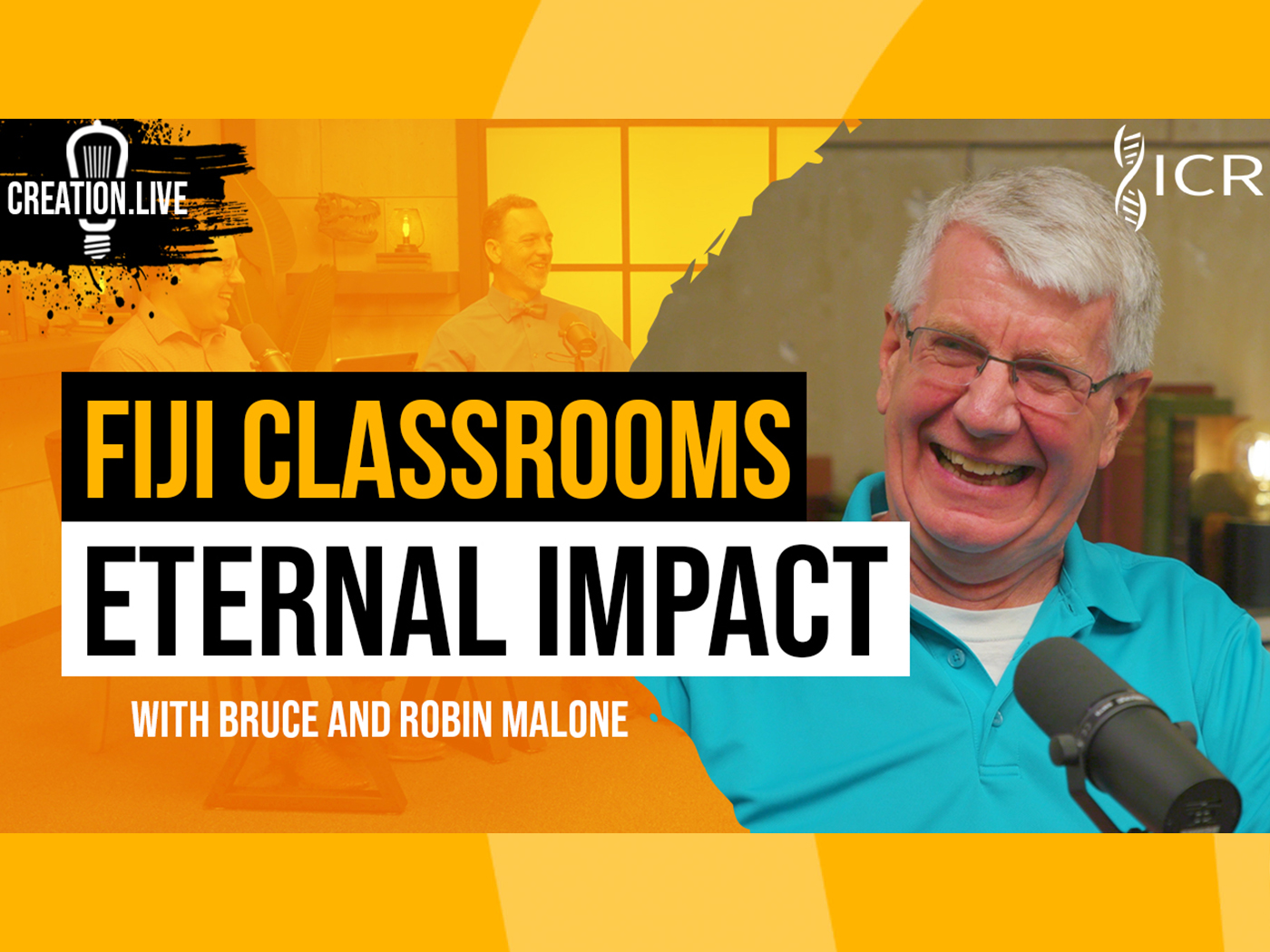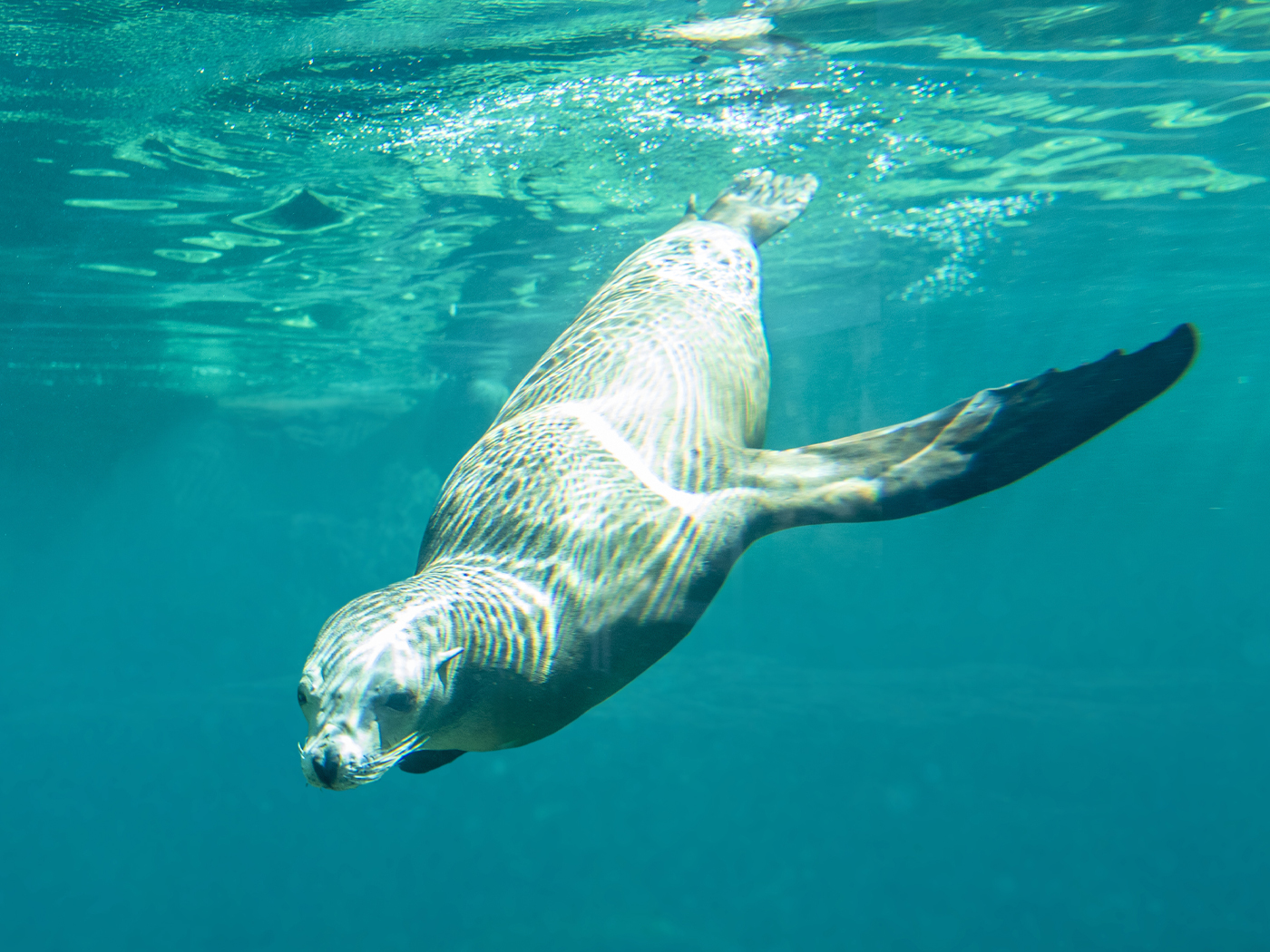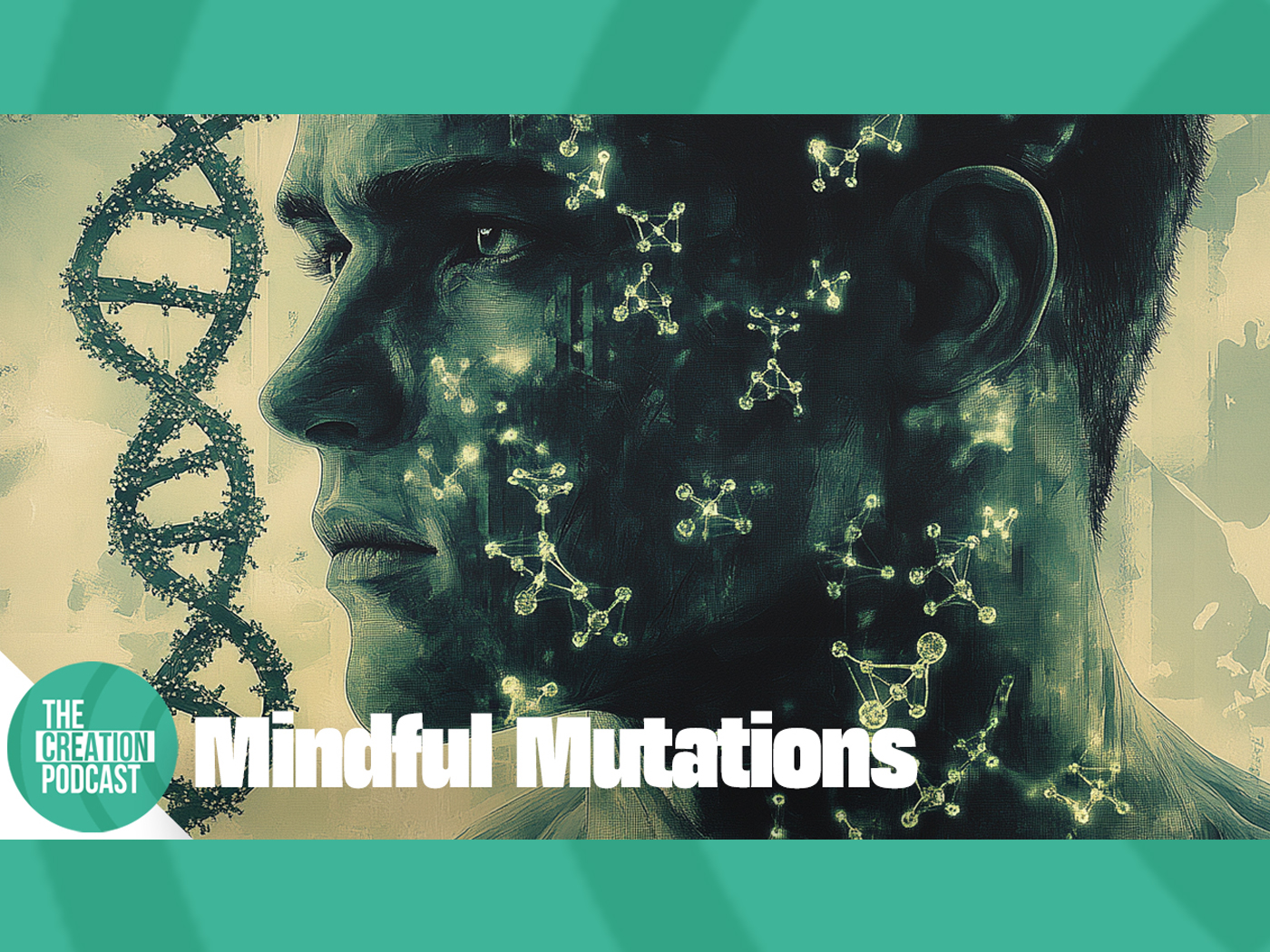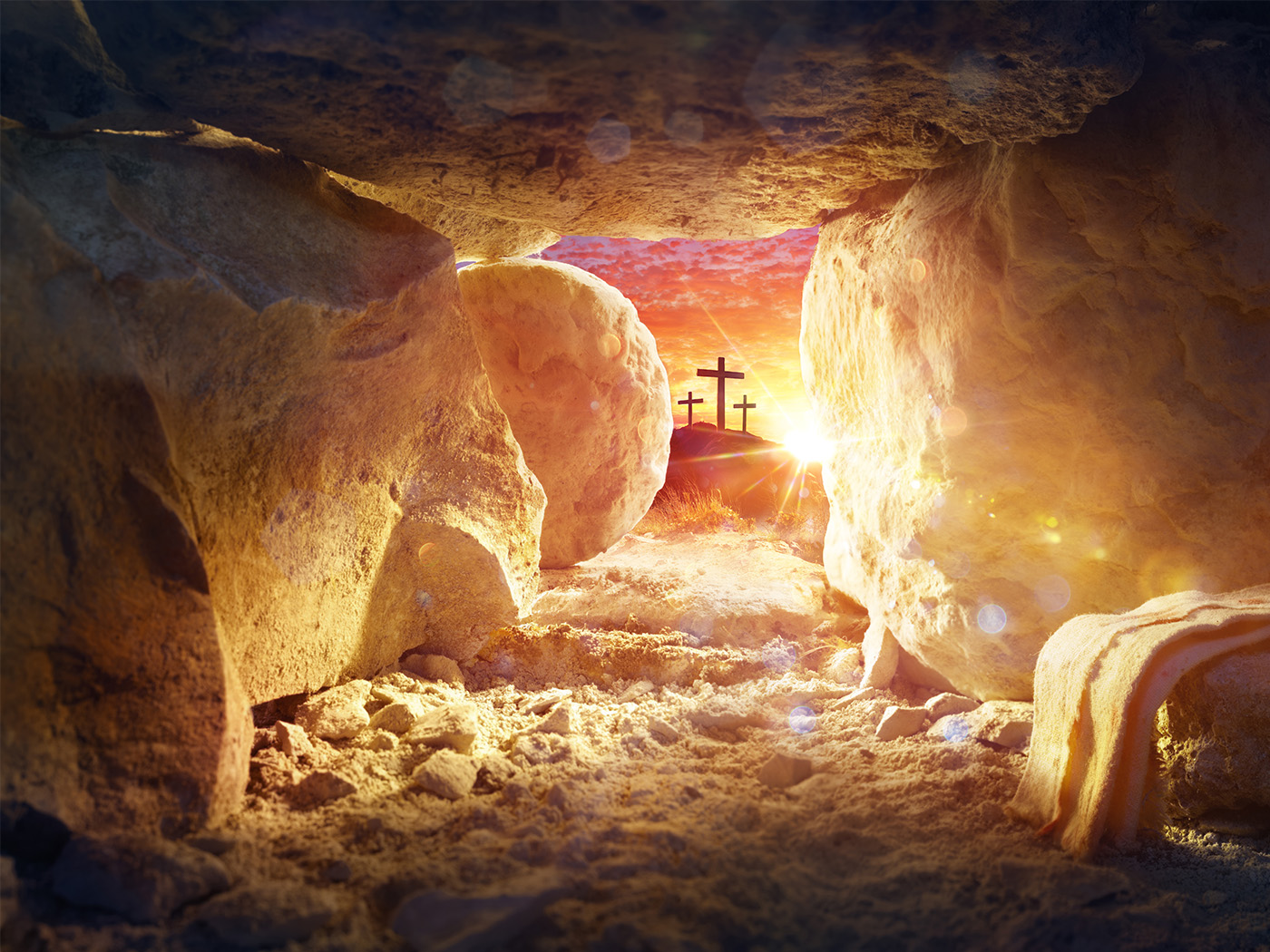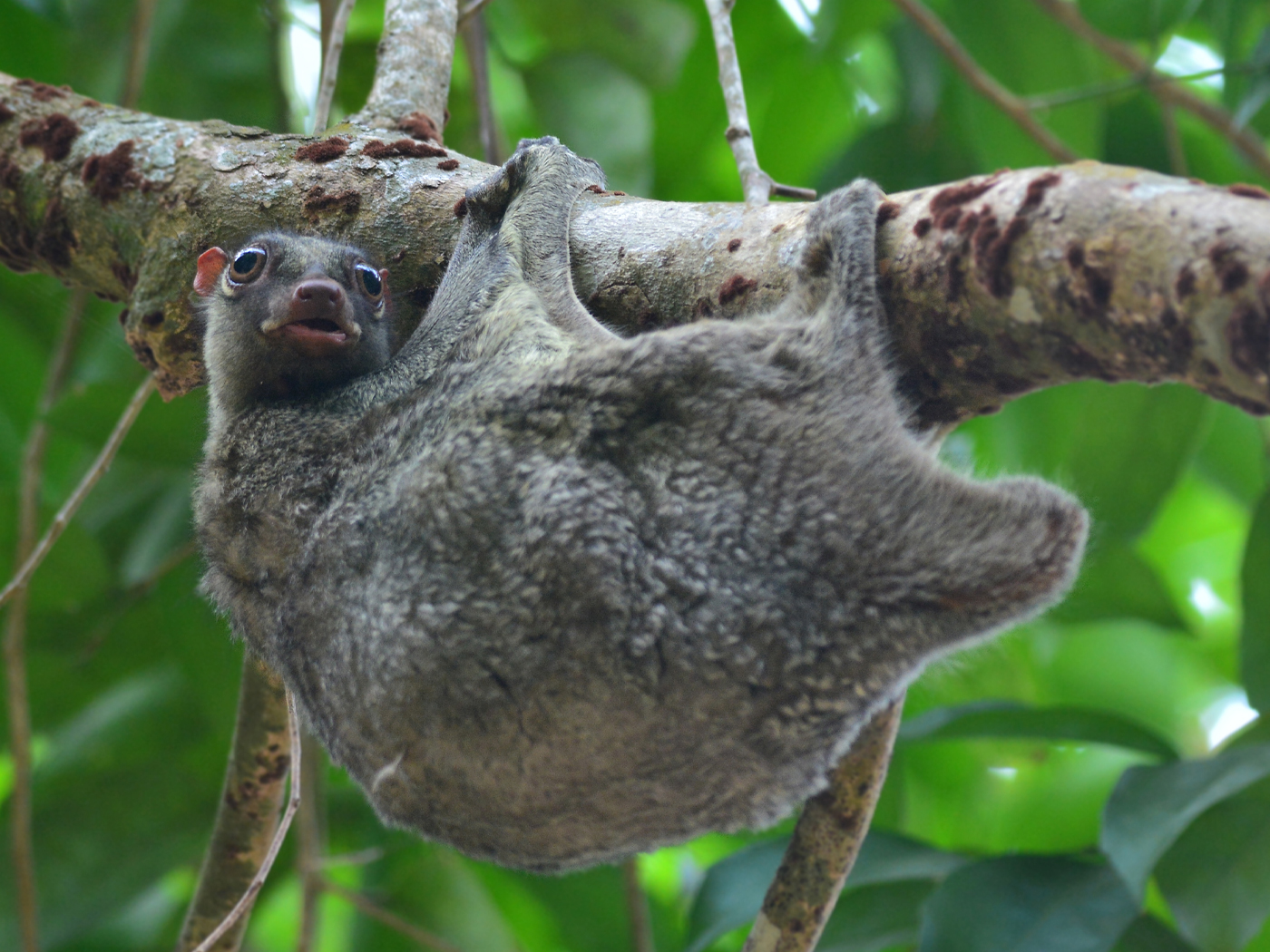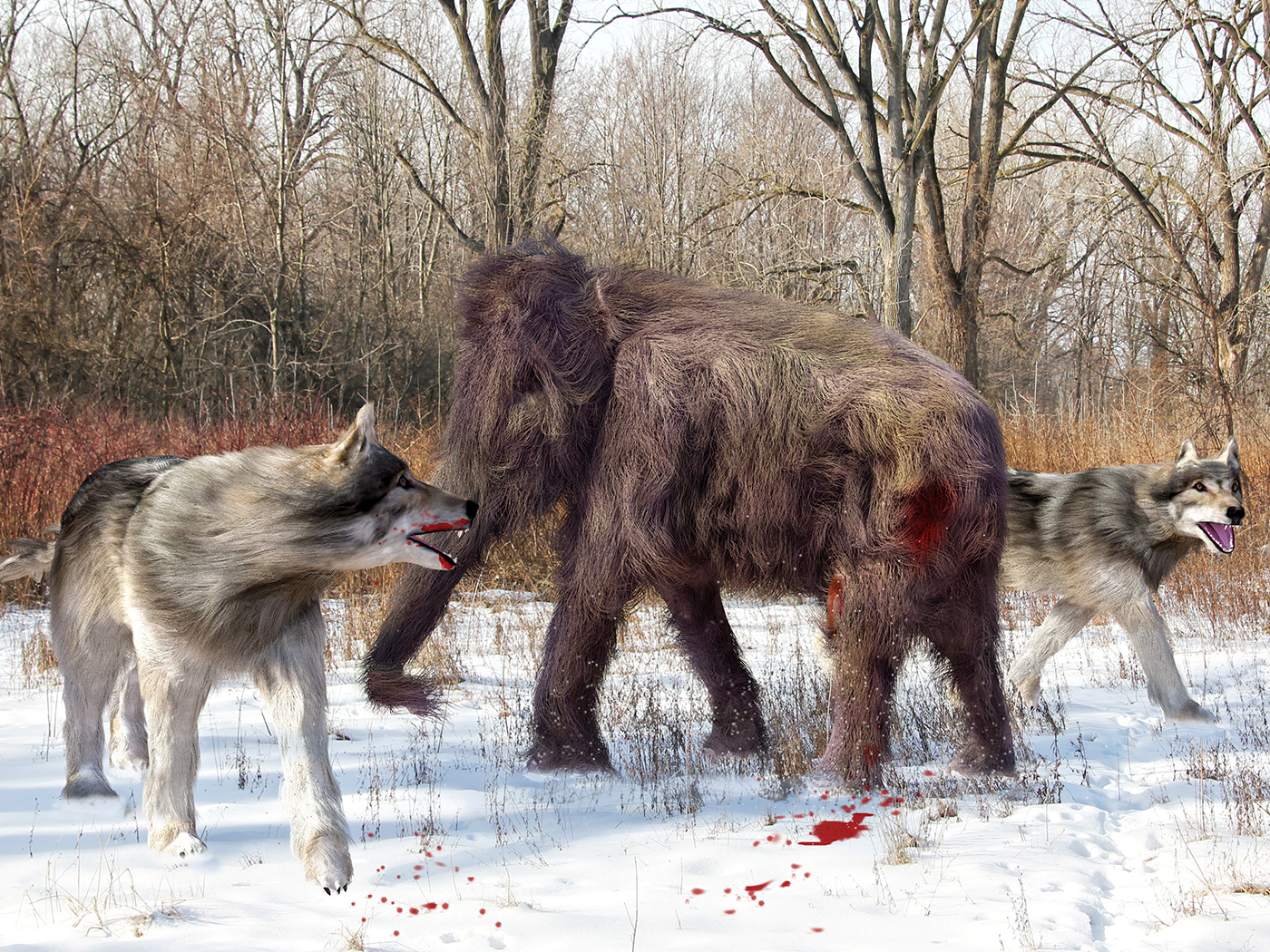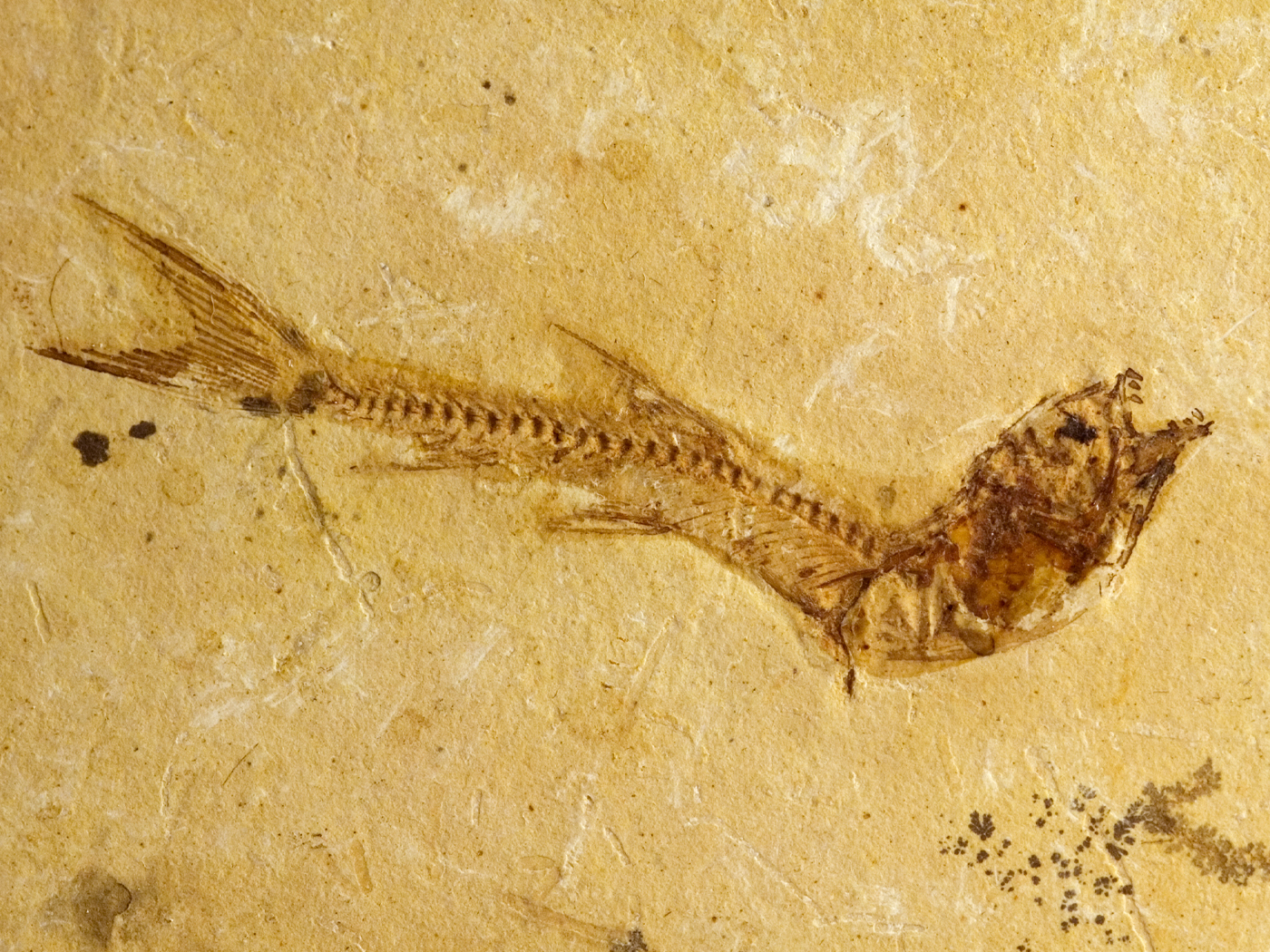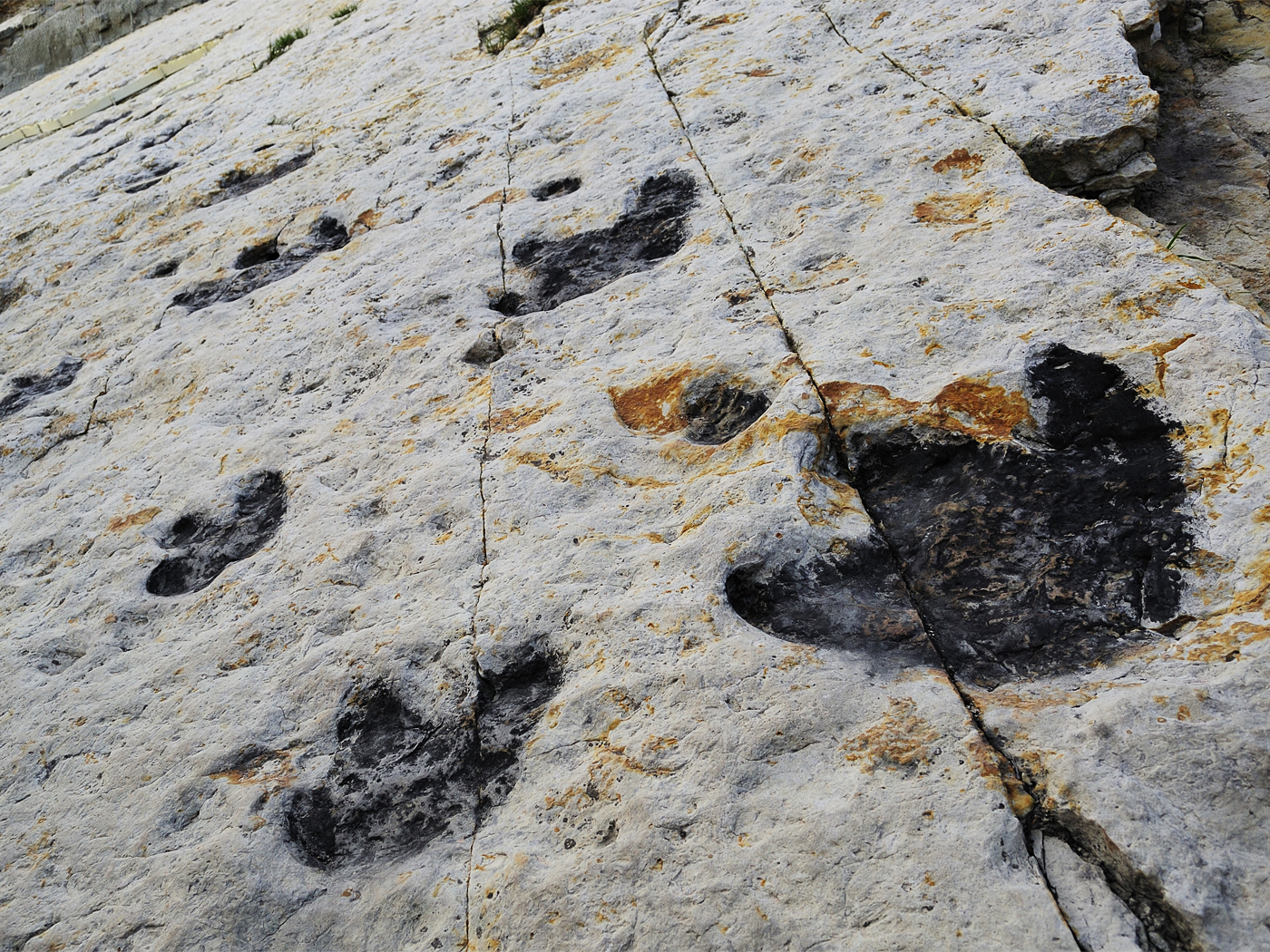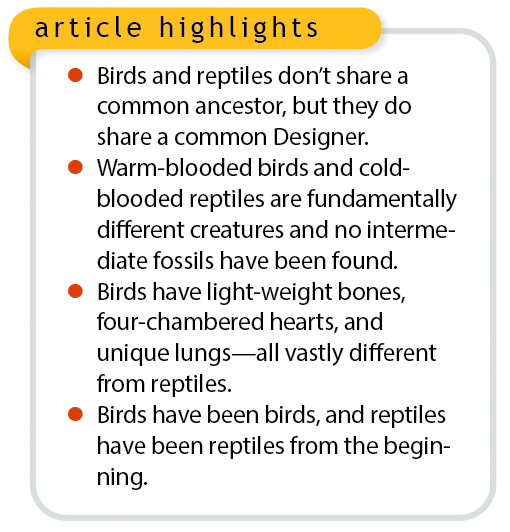 Are today’s birds genealogical “cousins” to today’s reptiles due to a shared evolutionary ancestry?
Are today’s birds genealogical “cousins” to today’s reptiles due to a shared evolutionary ancestry?
No. However, birds and reptiles share the same Creator, the Lord Jesus Christ, who created them to share the same earth.
According to the evolutionary sequence of events, birds are supposed to have evolved from reptiles.3 If that had occurred in the past, it would mean that today’s birds such as robins and roadrunners would be distant cousins of reptiles such as cobras and crocodiles.
The Darwinian tale portrays today’s birds as winged dinosaurs that supposedly survived a global extinction event that supposedly occurred about 66 million years ago.1,2 Is there any eyewitness report supporting this magical scenario, or even evidence of any such time frame? No and no.4,5 Also, don’t look for missing-link fossils of such reptile-to-bird transitions. Those missing links are still missing.
There are myriads of errors in this evolutionary speculation, but only a few are mentioned here. In particular, this pseudoscience scenario requires swallowing at least three invalid and drastic premises.
- The assumption that reptiles are not fundamentally different from birds.3
- The assumption that a secret agent (oxymoronically named natural selection, as if naturalistic outcomes were intended) can accidently invent—and then secure (i.e., genetically “lock down”)—such traumatic transitional transmogrifications.5
- The assumption that any such transitions’ biochemical and genetic details, in defiance of entropy’s universal destructiveness, repeatedly escaped thermodynamic reality.5
For starters, just imagine the first problem—the complicated anatomical and physiological differences between birds and reptiles.
- Birds have hollow bones; reptiles, except for marrow cavities, have solid bones.
- Birds use air sacs for nonstop unidirectional (one-way) airflow through their lungs; most reptiles have two-way breathing systems.
- Birds are endothermic (warm-blooded), actively controlling their body temperature; reptiles are mostly ectothermic (cold-blooded).
- Birds have muscle-controlled feathers; reptiles have dry skins or scales.
- Birds have four-chambered hearts; reptiles usually have three-chambered hearts.
Most birds have major muscles anchored to their front, attached to a keeled sternum (breastbone), facilitating perching; reptiles’ main muscles anchor to their vertebral column (backbone), attached in arrangements conducive for standing, walking, and running.2
Don’t expect reptiles to accidentally change their genes to produce birds as descendants. As Fiona Smith says: “In other words, you don’t just put feathers on a reptile and then it can fly. There are a multitude of attributes, all working together, that make a bird fly.”2
There is much more proof—to borrow Dr. Frank Sherwin’s observations—that birds have always (and only) been birds and that reptiles have always (and only) been reptiles.
Reference
- For centuries evolutionists have proposed the notion that birds somehow evolved from reptiles, imagining “feathered dinosaurs” or dinosaur-like flying reptiles (like pterodactyls) as speculative transitional animals. Burnett, R. W., H. I. Fisher, and H. S. Zim. 1958. Zoology: An Introduction to the Animal Kingdom. New York; Simon and Schuster, 5-7, 13-17, 72-75; Zim, H. S. and I. N. Gabrielson. 1964. Birds: A Guide to the Most Familiar American Birds. New York: Golden Press, 12-13.
- “Birds are incredible flying (and occasionally non-flying) machines. The Creator has designed these creatures with specialized flight apparatus, an amazing respiratory system, not to mention unbelievable migration and navigation abilities.” Sherwin, F. A ‘One-Hundred-Million-Year-Old Bird’ Is Still a Bird. Creation Science Update. Posted on ICR.org June 20, 2006, accessed October 15, 2021. See also Johnson, J. J. S. Wandering Albatross: Wide Wings on the Winds. Creation Science Update. Posted on ICR.org July 2, 2020, accessed October 15, 2021. Job 39:26-27 illustrates God’s bioengineering that enables heavy birds to efficiently use wind current for launching their heavier-than-air bodies into the sky.
- Smith, F. 2015. Evidence for Creation: A Tour through Some East-Australian Zoos. Fremantle, Western Australia: Vivid Publishing, 164-165 (quotation), 251. Fiona Smith, an Australian professional geoscientist and science educator, graduated ICR’s School of Biblical Apologetics during 2015 with a Master of Christian Education degree (joint major in Biblical Education & Apologetics). See also 1 Corinthians 15:39.
- Regarding the need for reliable eyewitnesses to learn the truth about unique events of the no-longer-observable past, see Johnson, J. J. S. 2016. There’s Nothing Like an Eyewitness. Acts & Facts. 45 (12): 20.
- Regarding the ubiquitous and inescapable destructiveness of biochemical entropy, see Johnson, J. J. S. 2018. Infinite Time Won’t Rescue Evolution. Acts & Facts. 47 (6): 21. Regarding the animistic role that selectionists imagine “ature as playing in order to “favor” or “select” a series of genetic mistakes (for supposedly producing phenotypically survivability “fit” outcomes), see Guliuzza, R. 2011. Darwin’s Sacred Imposter: The Illusion that Natural Selection Operates on Organisms. Acts & Facts. 40 (9): 121-15.
* Dr. Johnson is Associate Professor of Apologetics and Chief Academic Officer at the Institute for Creation Research.





